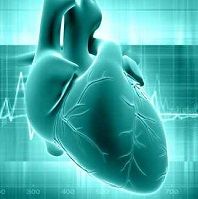Novel Buffered Subcutaneous Furosemide Combines Lower Cost and Therapeutic Benefit for Patients with Heart Failure
Subcutaneously administered furosemide yields nearly identical outcomes compared with the traditional intravenous method of delivery, but is more convenient and well tolerated.

Nothing else matters if you don’t get the basics right. The route of drug administration can have dramatically different pharmacodynamic profiles, with most of the drug quickly wasted if the optimal route is not used, according to Domenic Sica, MD, professor of internal medicine, Virginia Commonwealth University, Medical College of Virginia School of Medicine, and consultant to SC Pharmaceuticals.
During a presentation at the 2016 annual meeting of the Heart Failure Society of America, Sica pointed out that furosemide is the most widely used loop diuretic in the treatment of heart failure (HF), and subcutaneous (SC) furosemide use may offer a convenient, lower-cost alternative to intravenous (IV) furosemide. To date, SC administration of furosemide has been precluded due to its alkaline pH (9.0), but with the development of a novel buffered formulation, it is now possible to perform SC administration of furosemide.
Sica elaborated on this development, noting that the history of diuretic use in this country is now 6 decades out. Initially, researchers generated an abundance of information on diuretics, with a great amount of time devoted to developing methods for measuring the effects of primary therapy. During this time, they also obtained an abundance of pharmacodynamic data. By the mid-1990s, a more pharmacokinetic approach was developed to assess a treatment response pattern. Thus, a new administration concept was born.
In the study Sica and colleagues presented, analysis was performed involving 16 patients. Administration of 80 mg furosemide was performed by two different routes: SC (8 mg/mL, 10 mL, in a biphasic pattern; 30 mg over 60m and then 12.5 mg/h over 4h) or IV control (2 doses separated by 2h). Plasma concentrations were monitored, and treatment was done on an outpatient basis.
The IV mode of administration created high immediate, post-injection peak concentrations, which in a kinetic sense is wasted drug because it has nowhere to go. The SC administration created a much more therapeutically useful sustained plasma concentration.
Sica pointed out that the individual time course from 0-8h and 0-24h for patients subjected to therapy shows short-term and long-term natriuretic effects to be quite comparable for both routes of administration.
in summary, when the SC route of furosemide administration was used in a cohort of class II/III HF patients, it yielded almost identical results to that observed after IV administration. Sica said, “We have now reverted to a pharmacokinetic modeling pattern to discern response parameters in a patient. This stands a chance of providing incredible new approaches to help patient management of supposed diabetic patients, who may stand to benefit like crazy.”
The presentation was positively appreciated by the audience. Sica pointed out that the duration effect may be much more substantial than was first thought. A physician asked about adverse events after SC administration. Sica stated that there may be a little redness, but that on a symptom score of 1 to 10, it was maybe a 1.5. Another physician asked about edematous patients, at which point Sica stated that a more detailed investigation is needed for these patients.
Related Coverage:
Larry Allen, MD: Benefits of Shared Decision Making in Heart Failure Patients
Barry Borlaug, Mayo Clinic: Heart Failure With Preserved Ejection Fraction